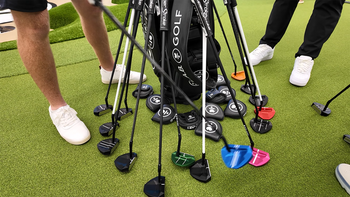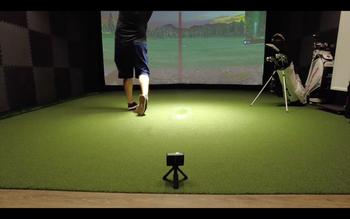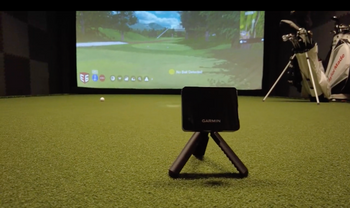If there’s a company in golf that’s stood the test of time more than Ping, I haven’t heard of it. For decades, the Solheim family has helped golfers of all levels, just like you, “Play Your Best.”
Unlike a lot of the other major manufacturers that blaze your television screen with fancy lingo, bright lights, and bling of every other kind, Ping wants their loyal customers to know that they care about their golf games and will continue to churn out top-notch equipment. Simple as that.
If you’ve ever played a piece of Ping equipment, you know this to be true. Their stuff never fails to disappoint and performs just as well as anything else out on the market.
The same story we’ve been witnessing for years continues to play out with the series of Ping G425 drivers.
Key Features
TI9S+ face is not new for Ping, but continues to deliver ideal launch conditions for players of all abilities.
Dragonfly crown design removes weight from the top of the club and redistributes it elsewhere for better aerodynamics and increased clubhead speed.
Turbulators on the top of the crown reduce drag during the swing and increase swing speed. Faster ball speeds are the end result.
Ping G425 Max, Max LS, and Speed Driver
Experience the pinnacle of golf technology with the Ping G425 Max, a premium driver that redefines accuracy and power.
Design and Technology
For as long as anyone can remember, Ping has stood by it’s tried and true technological developments and design features. While other manufacturers come up with a tagline and engineer a story of technology to fit the jargon, Ping does the opposite. The company’s engineering feats ARE the story.
While there’s nothing shockingly new when it comes to technology and design in the G425 drivers, the concepts that have stood the test of time have been improved upon.

Ping G425 Max Driver
We’ve already talked about Ping’s unwavering commitment to produce the most forgiving drivers in the game. Suffice it to say the G425 Max is the most forgiving driver the company has ever brought to market.
The technology conversation for the G425 Max starts with a 26-gram moveable weight in the back of the clubhead. This allows players to optimize MOI (and therefore forgiveness) for their specific swing.
While some moveable weight tracks diminish MOI when they’re moved into a draw position, the track system of the G425 Max allows MOI to actually be the highest when the weight is set to draw bias.
Whether you struggle with a slice or a hook, the adjustability in the G425 has shown to provide up to ten yards of shot correction in testing.
Ping G425 SFT Driver
For golfers who struggle with a pronounced slice, the SFT model might be just what the doctor ordered.
While this model isn’t adjustable, it’s engineered specifically with slicers in mind. That’s thanks to a 23-gram weight that’s specifically positioned a little more toward the heel. This design feature helps golfers square the face through impact, and effectively eliminates the right side of the golf course.
Again, there’s nothing strikingly revolutionary about the design and technological features of this club. It’s more that Ping has perfected what they already know works for those of you who yell “fore right” all too often.
Ping G425 LST Driver
The LST driver is the lowest spinning driver in the G425 family. That’s great news for players that are looking for that knuckle-ball effect off the face and more distance.
The LST also has the smallest head. That makes it more aerodynamic and might be preferable for better players looking for added control.
The story checks out once again. There’s nothing that stands out in terms of new glitz and glamor with the LST. Instead, it’s just an improvement on what Ping already knows works.
Our Experience
I’ve long been a fan of Ping drivers, and it’s not because they’re headquartered in my hometown of Phoenix. I’ve had them in and out of my bag for years and I’m the first to admit that they’re some of the most forgiving drivers I’ve ever hit.
That’s certainly the case with all three of the G425 drivers. While I wasn’t blown away with a ton of added yardage or anything too new from a technological standpoint, I will say that Ping has improved upon previous driver models with the G425 series. That’s notably true in terms of forgiveness. The G425 drivers set a high standard, but the latest Ping G430 LST driver takes forgiveness and performance to another level. With enhanced aerodynamics and cutting-edge weight distribution, the Ping G430 LST driver features a sleek design that not only looks great but also promises improved swing speed. Golfers will appreciate the combination of stability and distance, making this driver a worthy addition to any bag.
Ping G425 Max, Max LS, and Speed Driver
Experience the pinnacle of golf technology with the Ping G425 Max, a premium driver that redefines accuracy and power.
Is the Ping G425 Max, Max LS, and Speed Driver Worth It?
Absolutely, while the Ping G425 Max, Max LS, and Speed Driver is a great product, there are a few pros and cons that you need to be aware of:
Pros:
-
High MOI: Offers great forgiveness and stability.
-
Adjustability: Includes a 26g movable weight for neutral, draw, or fade bias.
- Forgiving: Suitable for both skilled and mediocre golfers.
Cons:
-
Aesthetics: Not considered the best-looking driver.
-
Sound: Some users find the sound less appealing.
- Cost: Generally more expensive than some competitors.
Frequently Asked Questions
What are the main differences between the Ping G425 Max, G425 LST, and G425 SFT drivers?
The Ping G425 Max is designed for maximum forgiveness and control, featuring a 26-gram adjustable tungsten weight that can be set to neutral, draw, or fade positions. The G425 LST (Low Spin Technology) is aimed at reducing backspin for longer drives, ideal for players with faster swing speeds, and has a 17-gram adjustable weight. The G425 SFT (Straight Flight Technology) is designed to help golfers who struggle with a slice, featuring a fixed 23-gram weight in the heel to promote a draw bias.
Which Ping G425 driver is best for beginners?
The Ping G425 Max is generally recommended for beginners due to its high forgiveness and ease of use. Its adjustable weight system allows for customization to suit different swing types, making it a versatile option for those new to the game.
How does the adjustability of the Ping G425 drivers impact performance?
The Ping G425 drivers feature an adjustable hosel that allows loft to be modified by ±1.5 degrees. This adjustability, combined with the movable tungsten weights, helps golfers fine-tune their ball flight and optimize launch conditions for better performance. The G425 Max and G425 LST both offer this adjustability, whereas the G425 SFT has a fixed weight for consistent draw bias.
What are the key performance benefits of the Ping G425 LST driver?
The Ping G425 LST driver offers lower spin rates, which can lead to longer drives for players with higher swing speeds. It maintains a high level of forgiveness despite its compact design, making it suitable for skilled players who want to reduce spin without sacrificing stability.
How does the sound and feel of the Ping G425 drivers compare to other models?
The Ping G425 drivers have a distinctive sound and feel, characterized by a solid, powerful impact. Some users find the sound to be louder compared to other brands like TaylorMade or Callaway, which may have more muted acoustics. The internal ribbing in the G425 series helps to reduce vibrations, providing a more pleasing feel without compromising the sense of power.
Conclusion
Let’s face it, most of us don’t hit our drivers as consistently solid as we say we do (insert tongue-in-cheek comment about the male ego).
Ping knows this and they have for years. That’s why they’ve stayed committed to producing the most forgiving drivers in the game while other companies have sacrificed it in the name of more speed and distance.
For me, and I’m guessing the majority of our readers, more forgiveness is a good thing. Especially off the tee. If that’s what you’re after, you’d be hard pressed to find anything better than a Ping G425 driver.






